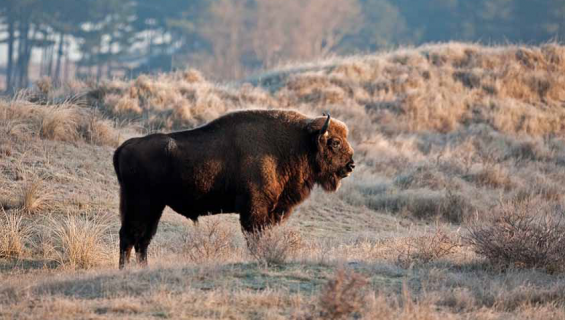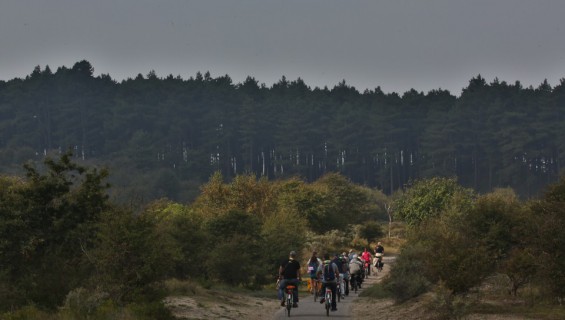Dune valleys and dune pastures
Rare plants and animals live in this astonishing dune landscape. The flowery dune pastures are of such high nature value that the park is part of the European nature network Natura 2000.
The Parnassia is blooming, the Niobe Fritillary is fluttering, Burgundy snails are hiding and nightingales and woodlarks are singing. Spread over the park, are large grazers such as Scottish Highlanders, Polish primitive horses, fallow-deer and herds of Wisent. With the introduction of the Wisent, the last wild bison of Europe, the area is made rougher in a practical manner.
The network of biking and hiking routes take you to different dune lakes, wide views and several war monuments.
Go wisent spotting

Wisents are also called European bison and justifiably belong to 'Europe’s Big 5'. Walk to the Wisent Lookout Point or hike on the trail that goes through the wisent area, marked with yellow posts.
Read moreWith the wind in your hair

Experience the dune landscape with its pastures, wide views and unique wildlife by bike. The visitors centre is the perfect starting point: rent bikes, get your cycle map and have a cup of coffee at the Dune café.
Get to the visitors centrePlan your visit
Open the Google maps and plan your visit to the dunes. Start at the visitors centre or travel to one of the other entrances ('ingangen') of the park.
